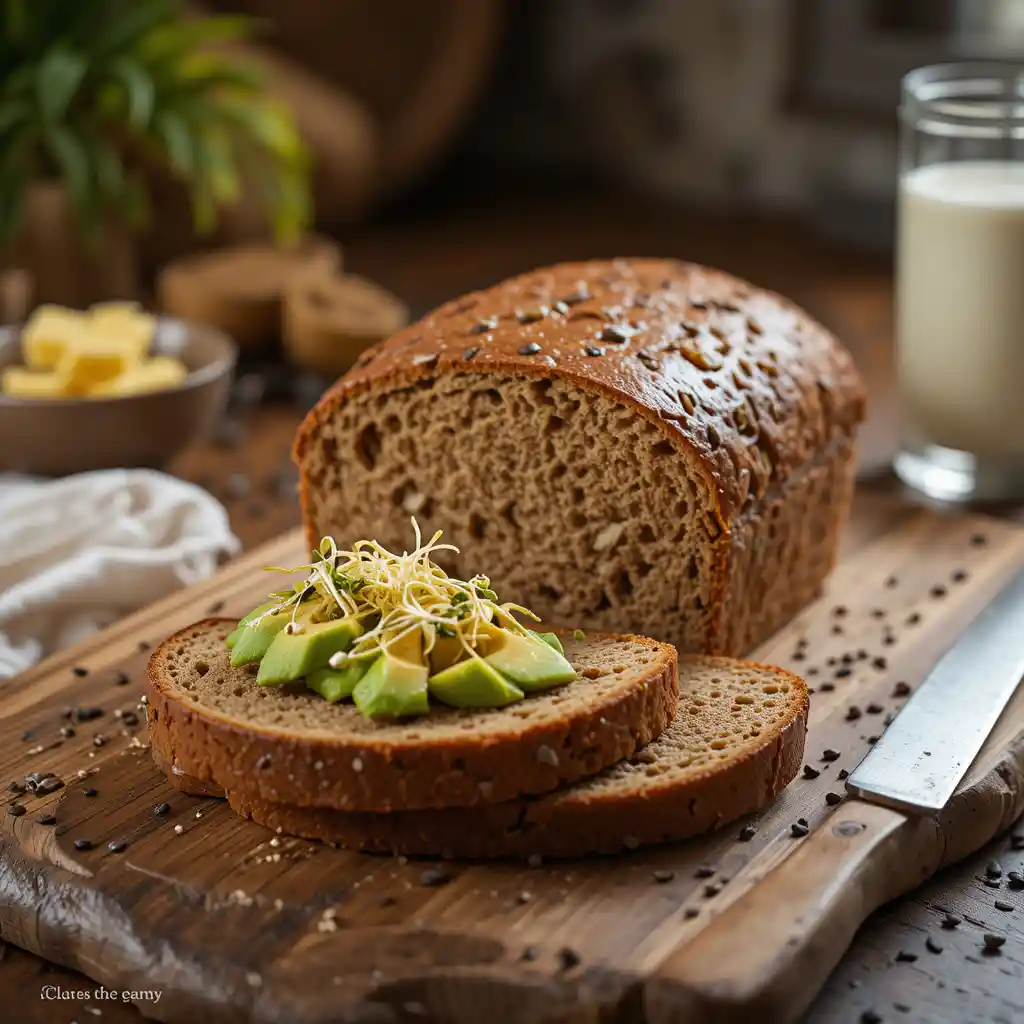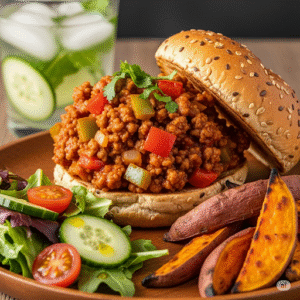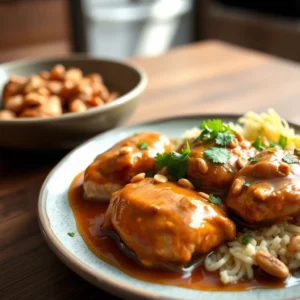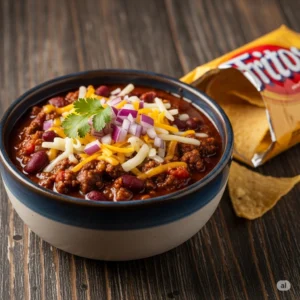Nutritious rye bread recipe: 4 health benefits you need to know
Table of Contents
Easy Rye Bread Recipe: 4 Health Benefits You Need to Know
Struggling to find wholesome nutritious bread options that actually support your health goals? Most store-bought breads are loaded with preservatives, refined sugars, and empty calories that leave you feeling sluggish and unsatisfied. The solution isn’t cutting out bread entirely—it’s choosing the right kind.
This easy rye bread recipe transforms your kitchen into a wellness hub, delivering dense nutrition and sustained energy in every slice. Endorsed by certified nutritionists and baking specialists, this nutritious recipe combines traditional European baking wisdom with modern health science to create bread that truly nourishes your body.
In this comprehensive guide, you’ll discover the four remarkable health benefits of homemade rye bread, learn expert ingredient selection tips, master foolproof baking techniques, and explore creative variations that fit any dietary lifestyle.
Why This Recipe Works
This easy nutritious rye bread recipe isn’t just another baking project—it’s a strategic approach to better nutrition that fits seamlessly into your wellness routine.
- Designed for busy lifestyles—active prep time under 20 minutes with simple overnight rising
- Packed with fiber, B-vitamins, and minerals that support digestive health and sustained energy
- Customizable for weight management, blood sugar control, and specific dietary restrictions
- Uses affordable, accessible ingredients you can find at any grocery store
- Produces two hearty loaves perfect for meal prep and family sharing
Choosing the Right Ingredients
Creating nutrient-dense rye bread starts with selecting quality ingredients that maximize both flavor and health benefits.
Best Ingredients for Maximum Nutrition
The foundation of exceptional rye bread lies in choosing whole grain flours that retain their natural fiber and mineral content. Rye flour provides manganese for bone health, while wholemeal flour adds protein and B-vitamins. Fast-action dried yeast ensures reliable rising, and raw honey offers natural sweetness plus beneficial enzymes that refined sugars destroy.
Smart Grocery Shopping Tips
Look for rye flour with a slightly coarse texture and earthy aroma—signs of freshness and minimal processing. Choose wholemeal flour that feels substantial in your hands, not powdery or bleached white. Store flours in airtight containers in cool, dry places to preserve nutritional integrity for up to six months.
Ingredient Substitutions
For gluten sensitivity, substitute half the wholemeal flour with buckwheat or oat flour. Replace honey with maple syrup for vegan diets, or use stevia for lower sugar content. Those avoiding caraway can experiment with fennel seeds, sesame seeds, or omit seeds entirely for a milder flavor profile.
Ingredients & Prep
Essential Prep Steps
Begin by measuring all ingredients precisely—baking success depends on accuracy. Warm your water to body temperature (around 98°F) to activate yeast without killing it. Combine dry ingredients in a large mixing bowl, creating a well in the center for wet ingredients. This technique ensures even distribution and prevents flour pockets.
Flavor Enhancers
Caraway seeds provide rye bread’s signature earthy, slightly bitter notes that complement the grain’s natural nuttiness. Toast seeds lightly in a dry pan for 30 seconds to intensify flavor. Consider adding a tablespoon of ground flaxseed for omega-3 fatty acids, or a teaspoon of apple cider vinegar to enhance the bread’s tang and improve texture.
Pantry Staples
Keep high-quality sea salt on hand—it enhances flavor while providing trace minerals. Store dried yeast in the refrigerator after opening to maintain potency. Raw honey not only sweetens but also helps create a tender crumb and golden crust through natural caramelization.
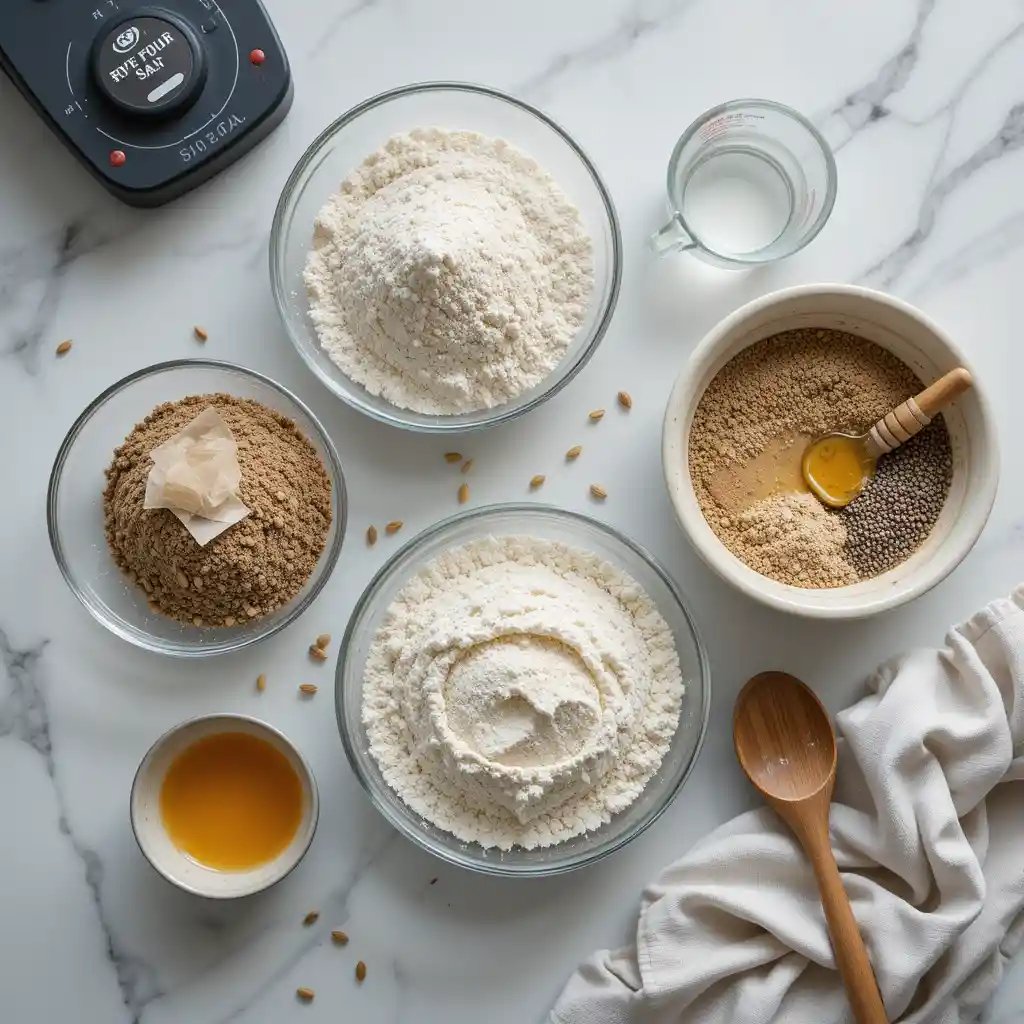
Step-by-Step Cooking Instructions
Pre-Cooking Prep
- Activate the yeast: Dissolve 7g fast-action dried yeast in 250ml warm water with 1 tablespoon honey. Let stand 5-10 minutes until foamy.
- Combine dry ingredients: Whisk together 200g rye flour, 200g wholemeal flour, ½ teaspoon salt, and 1 teaspoon caraway seeds in a large bowl.
- Create workspace: Lightly flour your countertop and have a clean kitchen towel ready for covering dough.
Cooking Methods
- Mix the dough: Pour activated yeast mixture into flour well. Stir with a wooden spoon until a shaggy dough forms—it will look rough initially.
- Knead effectively: Turn dough onto floured surface and knead 8-10 minutes until smooth and elastic. The dough should spring back when poked gently.
- First rise: Place dough in oiled bowl, cover with damp towel, and let rise 1-2 hours until doubled in size.
- Shape and second rise: Punch down dough, shape into a round loaf, place on parchment-lined baking sheet. Cover and rise 45 minutes.
- Bake to perfection: Preheat oven to 220°C (200°C fan). Score top of loaf, bake 30-35 minutes until golden and hollow-sounding when tapped.
Nutritional Optimization
Avoid over-kneading, which can break down rye’s delicate fiber structure. The longer, cooler rise develops complex flavors while preserving nutrients. Baking at high initial heat creates steam for a crispy crust while maintaining a moist, nutritious interior.
Storage & Meal Prep Tips
Cool completely before slicing to prevent gummy texture. Store wrapped in breathable cloth for 3-4 days at room temperature, or slice and freeze for up to 3 months. Pre-slice portions for easy toasting and portion control throughout the week.
Expert Tips for Healthy Cooking
Avoiding Common Nutritional Pitfalls
Many homemade bread recipes call for excessive sugar or refined oils that negate health benefits. This easy rye bread recipe uses minimal honey for natural sweetness without blood sugar spikes. Avoid adding butter or oil to the dough—rye’s natural oils provide sufficient richness while keeping calories controlled.
Recommended Cooking Tools
A kitchen scale ensures accurate measurements crucial for consistent results. A bench scraper helps handle sticky rye dough without adding excess flour. A spray bottle creates steam in your home oven, mimicking professional bakery conditions for superior crust development.
Meal Storage & Reuse
Transform day-old slices into nutritious breadcrumbs for coating proteins or binding meatballs. Cube slightly stale bread for homemade croutons rich in fiber and complex carbohydrates. Freeze sliced bread in portions to prevent waste while maintaining freshness.
Flavor Variations & Customization
Low-Carb/Keto-Friendly Adaptations
Replace 100g wholemeal flour with almond flour or ground sunflower seeds to reduce carbohydrates while adding healthy fats. Increase eggs to two whole eggs for structure and protein. These modifications create a denser, more protein-rich loaf suitable for ketogenic diets.
Plant-Based Options
This easy rye bread recipe is naturally vegan when using maple syrup instead of honey. Add ground chia seeds or flaxseed meal for omega-3 fatty acids typically found in fish. Nutritional yeast provides B-vitamins often lacking in plant-based diets.
Global Inspirations
Create Scandinavian-style bread by adding sunflower seeds and pumpkin seeds. For German-inspired loaves, increase caraway and add a tablespoon of molasses for deeper color and flavor. Mediterranean variations might include rosemary and olive oil for heart-healthy monounsaturated fats.
Serving & Pairing Suggestions
This nutrient-dense rye bread pairs beautifully with protein-rich toppings that create balanced, satisfying meals. Layer smoked salmon with cucumber and dill for omega-3 fatty acids and fresh vegetables. Create open-faced sandwiches with avocado, sprouts, and hemp seeds for plant-based protein and healthy fats.
For breakfast, top toasted slices with almond butter and sliced banana for sustained energy. The bread’s complex carbohydrates release glucose slowly, preventing mid-morning energy crashes common with refined grain products.
Complement meals with herbal teas like chamomile or peppermint that aid digestion of the bread’s high fiber content. Green tea provides antioxidants that work synergistically with rye’s phytonutrients for enhanced health benefits.
FAQs
Is this recipe suitable for diabetics? Yes, this easy rye bread recipe uses whole grains and minimal natural sweeteners, creating a lower glycemic impact than white bread. The high fiber content helps slow sugar absorption, making it a better choice for blood sugar management. Always consult with healthcare providers about individual dietary needs.
Can I meal-prep this for the entire week? Absolutely! This recipe yields two loaves perfect for weekly meal preparation. Slice one loaf for immediate use and freeze the second whole or pre-sliced. Properly stored bread maintains quality for up to one week at room temperature or three months frozen.
What’s the best protein source for plant-based diets? Pair this rye bread with legume-based spreads like hummus or white bean dip for complete proteins. Nut butters provide healthy fats and protein, while nutritional yeast adds B-vitamins. Seeds like hemp, chia, or pumpkin seeds sprinkled on top boost protein content significantly.
How does rye bread compare nutritionally to white bread? Rye bread contains significantly more fiber, B-vitamins, iron, and magnesium than white bread. It has a lower glycemic index, meaning steadier blood sugar levels. The complex carbohydrates provide longer-lasting energy without the crash associated with refined grains.
Conclusion
This easy rye bread recipe proves that healthy eating doesn’t require sacrificing flavor or convenience. With just seven simple ingredients and straightforward techniques, you can create nutrient-dense bread that supports your wellness goals while satisfying your taste buds.
The four remarkable health benefits—improved digestion, steady energy levels, enhanced nutrient intake, and better blood sugar control—make this recipe an invaluable addition to any health-conscious kitchen. Each slice delivers the wholesome nutrition your body craves wrapped in the comforting satisfaction of freshly baked bread.
Ready to transform your relationship with bread? Try this easy rye bread recipe today and experience the difference real, wholesome ingredients make in your daily nutrition. Your body will thank you for choosing quality over convenience, and your taste buds will celebrate the rich, complex flavors that only homemade bread can provide.
Join our healthy cooking community for more nutritious recipes, meal planning strategies, and expert wellness tips that make eating well both simple and delicious. Because when you nourish your body with intention, every meal becomes an opportunity to feel your absolute best.

